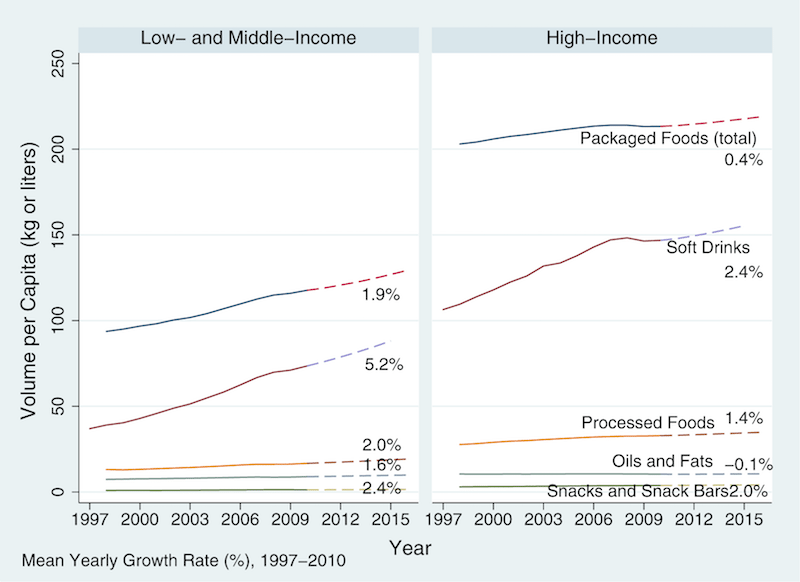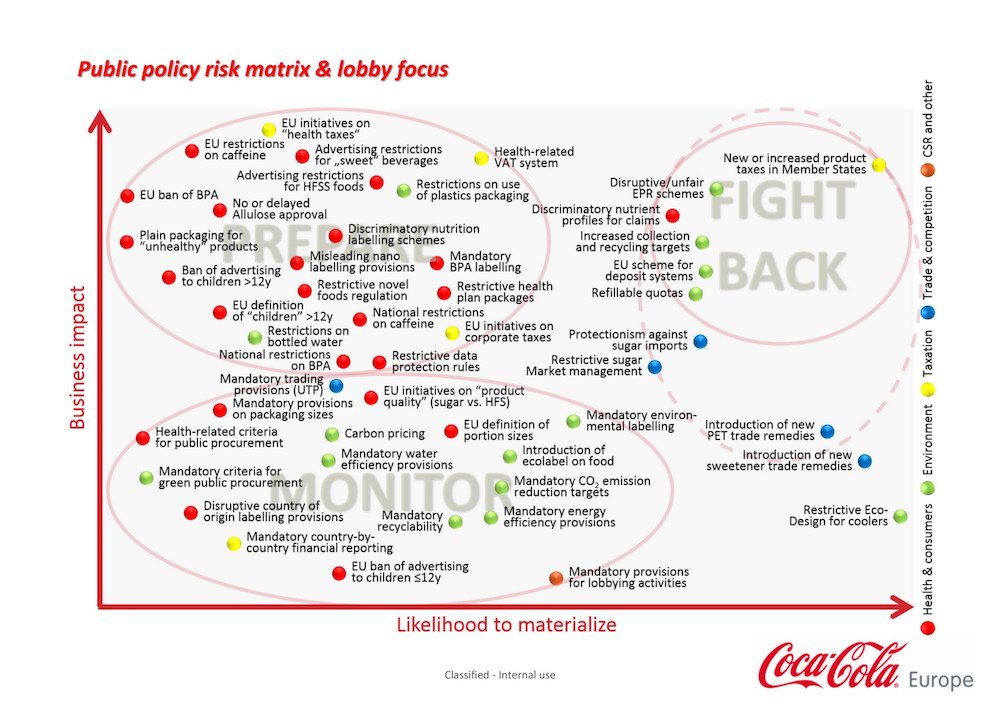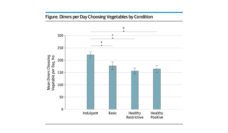Over the past few years, some global health experts have started using the term commercial determinants of health to describe “the strategies and approaches used by the private sector to promote products and choices that are detrimental to health.” In particular, food and beverage corporations have come under scrutiny for their aggressive techniques that contribute to the global burden of non-communicable diseases (NCDs) such as obesity, cardio-vascular diseases, and hypertension.
Tackling NCDs is one of the major public health challenges of the 21st century. In 2016, NCDs accounted for 72% of deaths globally. While many factors contribute to the rise of the NCD pandemic, the link between consumption of highly processed food and sugar-sweetened beverages and a number of NCDs is well-established. Despite the mounting evidence, the food and beverage industry took a page from the tobacco companies’ playbook and adopted strategies to increase consumption of their products, especially in low- and middle-income countries (Figure 1). These strategies pay off. In 2013, the industry represented 10% of the global economy and was valued at 7 trillion U.S. dollars. The ten biggest corporations each generate at least $1.1 billion a day. The numbers continue to grow by the year.

The soft power of marketing
Food and beverage corporations invest heavily in marketing. For example, in 2013, Unilever’s advertising expenditure was $7.4 billion and Coca-Cola’s was $3.3 billion. Such advertisements rarely honor voluntary guidelines for ethical marketing and often target vulnerable populations. In China, Hello Kitty, a popular cartoon character, is used to advertise beer (figure 2). In the United States, about a quarter of the food industry’s advertising budget targets children. In 2012, on average, preschoolers daily viewed 2.8 fast food ads. Children age 6–11 viewed 3.2 ads, and teens viewed 4.8 ads per day. Moreover, when compared to their Caucasian counterparts, African American children and teens were targeted by at least 50 percent more fast food advertisements.

To counter increasingly negative perceptions about processed food and sugar-sweetened beverages, corporations rely on ambiguous advertisements to deceive consumers such as using the word “fruit” to advertise products with very little fruit content. Investing in such marketing techniques is effective. Evidence shows that beer brands that violate voluntary guidelines are more popular than brands that obeyed the guidelines, especially among youth. Moreover, exposure to advertisements increases food intake, especially among children.
Influencing policies on local, national and global levels
While the impact of marketing is impressive, corporations invest even more to ensure the industry remains under-regulated. Such tactics include funding biased research, organizing public opinion campaigns to encourage voters to oppose regulations, and boosting campaigns that appeal to “personal freedom” in making purchasing decisions and emphasize “individual responsibility.”
Most importantly, corporations lobby politicians and high-level officials to influence the policy making process. Leaked emails from Coca-Cola show methodical and coordinated efforts to identify and attack policies that affect the company’s profit margin (figure 3). Coca-Cola is not alone in adopting these efforts. Similar tactics are employed by the industry around the world, in high, low- and middle-income countries alike.

Corporations are not shy about doing all they can to protect profits. Yet, policy makers and public health practitioners continue to give deference to the industry without setting clear guidelines to identify and minimize conflicts of interest. In 2003, the Sugar Association threatened to lobby the United States’ government to withdraw funding to the World Health Organization (WHO) over a healthy eating guideline. In 2011, several personnel from the same Sugar Association were present during the United Nations (UN) high level meeting on NCD risks. Some even gave keynote speeches. Recently, corporations succeeded in softening the language on corporate responsibility in the final WHO Montevideo 2018-30 roadmap on NCDs. The next meeting to watch is the UN third High-level meeting on NCDs which will be held later in 2018.
Lately, the UN and WHO have been advocating for product taxation as one of the most effective policies to reduce processed food and sweetened beverages consumption. Such efforts are commendable. However, as history has shown, they will be met with aggressive push back. It is time for the global community to adopt regulations that limit the role of corporations in creating policies.
Feature image: Lorena Cupcake, french-fries-wallpaper-1, used under CC BY 2.0














